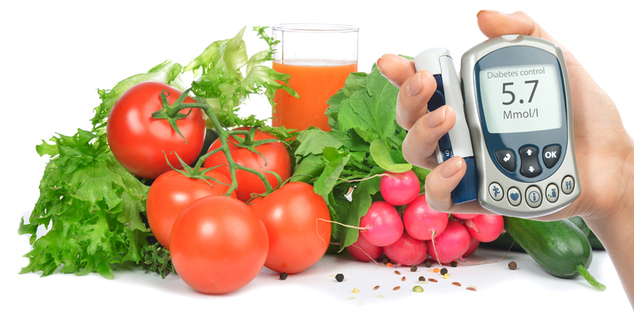The glycaemic index, “G.I. Factor” as it is commonly known, is a way tocompare the effect of different foods on the levels of sugar in the blood.
Carbohydrates are nutrients found in foods. They can be sweet, like those in sugar, or starchy like those in potato, bread or pasta.
Like most foods, carbohydrates must be digested into its basic components
before we can make use of it.
Carbohydrates are digested to glucose that is absorbed into the blood stream to supply every cell in the body with the energy needed to function.
Glucose is the body’s preferred fuel and is used much like petrol for a car.
However not all carbohydrates release glucose into the blood stream at the same speed. Some do it quickly, some more slowly. We used to think it was obvious-‘simple’ carbohydrates such as sugar, so named for their uncomplicated chemical make-up, were thought to be digested and absorbed more quickly than chemically’ complex’ carbohydrates like the starch in bread.
But it isn’t that simple. The GI factor proves that the speed and extent of rises in blood glucose levels cannot be predicted by the ‘simple’ versus‘ complex’ definition of carbohydrates.
The GI factor measures what actually happens to blood glucose levels after eating different carbohydrate foods. The measurement for each food is compared to that of pure glucose to provide a ranking. Pure glucose is ranked at 100, and almost all other carbohydrates foods are ranked below this.
The results have provided some surprises- some starchy foods such as
potatoes have a greater effect on blood glucose than does sugar.
So, how does the GI measure help us?
Low GI
Foods with a low GI produce smaller rises in blood glucose levels which are sustained over longer periods of time than higher GI foods.
Foods with a lower GI are important for:
- Lower blood glucose levels for people with diabetes
- Appetite and weight control- these foods “fill you up” more readily
- Lower insulin levels in the blood which are associated with lower risk of developing coronary heart disease and NIDDM ( non-insulin-dependent diabetes mellitus)
MODERATE GI
Many foods have moderate GI and their effects on blood glucose levels is
Somewhere between those of low or high GI foods
HIGH GI
Foods with higher GI are a source of rapidly available blood glucose. Blood glucose levels may remain higher for longer.
Foods with higher GI are important for:
- Athletes needing a ‘carbohydrate fix’ after heavy exercise to replenish fuel- depleted muscles- an advantage during training and competition.
- Immediate treatment of hypoglycaemia in people with diabetes.
Any carbohydrate food that is low in fat should form the basis of most meals. Eat a wide variety of fruits, vegetables and grain foods to maximize your intake of nutrients and dietary fibre.
Sugar has a moderate GI and the research clearly shows that the belief that sugar causes excessive rises in blood glucose is simply not true.
This is good news for people with diabetes who, through the benefit of GI research, can now enjoy sugar within a healthy balanced diet.
The GI is determined by a number of factors, and these can vary for
Different types of foods.
For example:
- In breads, the lower the GI of wholegrain, heavier textured varieties is due to the presence of intact grains rather than finely ground grains.
- Sugar (sucrose or table sugar) has a moderate GI due to it containing fructose, a type of sugar mainly found in fruits – incorporating sugar can actually reduce the GI of some high GI foods such as puffed rice breakfast cereals.
- In rice, the chemical structure of the different starches affects rice’s GI.
- The very low GI of legume vegetables is partly due to the presence of protein in these foods as well as their structure.
When choosing the foods that are best for you to eat, be aware that it is the ranking – whether a food has a relatively low, moderate or high GI – which is important, not the actual figure in the table.
Research has found the GI accurately predicts the ranking of foods, even though the actual figure might be between individuals. As with all eating plans, it is wise to find out what suits you best and plan to incorporate the GI to your own benefit.
So to sum it up, pick low ranking GI foods throughout the day to give you longer lasting energy and make you feel fuller for longer, and post exercise have a moderate to high GI meal to replace the energy used while exercising.





Leave A Comment